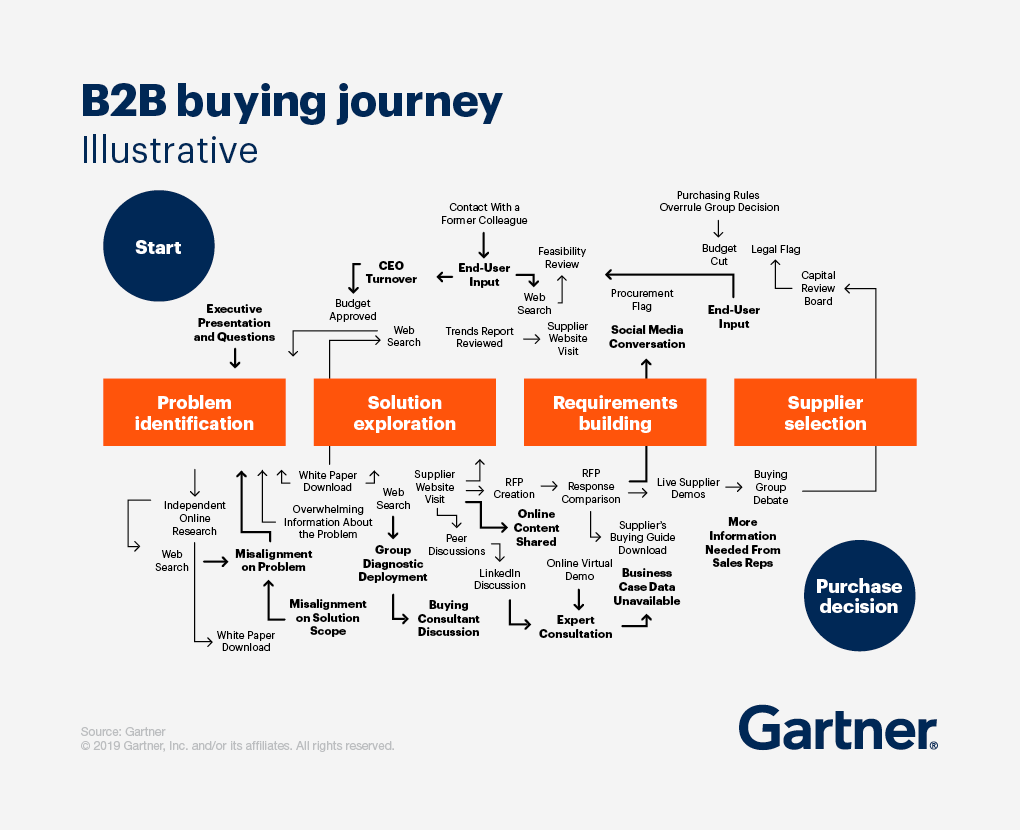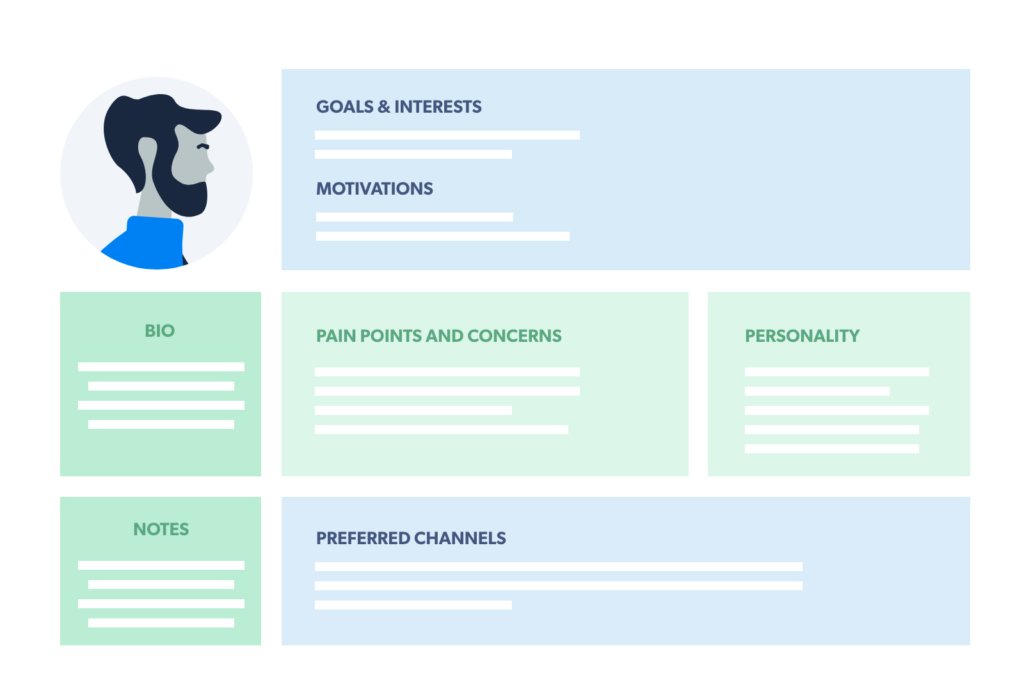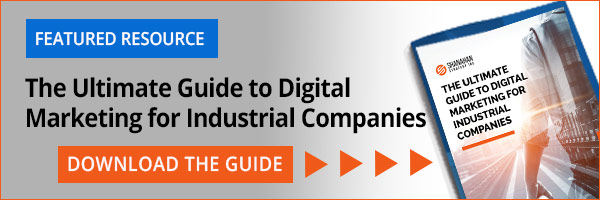You run your business strategically. Every move, purchase, sale, and decision is made with many stakeholders and the ultimate good of the business in mind.
Was your industrial marketing strategy chosen carefully? Are you seeing the results you planned for? Or do you often feel that you’re just trying new marketing tactics all the time and hoping something sticks?
We know from our experience that the most effective marketing strategies reflect the inner workings of a well-run company. These companies get results from their marketing because they understand the value of choosing a careful strategy and how to execute it.
To help you get these kinds of results, we’ve created this guide. Starting with a value statement and a hypothetical ideal customer, we’re going to explain how to craft a comprehensive marketing strategy for your industrial business.
Key Takeaways:
- Laying a strong foundation will simplify the process of creating an industrial marketing strategy
- E-commerce is growing in importance, which means your website and social media are your most important marketing tools
- Quality content and SEO can convert buyers, educate prospects, and help you hold onto existing customers
Set the Foundation with a Buyer Persona
B2B marketing in 2023 is all about building relationships. You want to start with creating a buyer persona. A buyer persona is a fictional representation of your ideal customer. They are defined by:
- Their company and its goals
- Their role within the company (including being a decision-maker)
- Their personal goals, wants, and needs
- Their chain of command
- Their personality, experience, and knowledge
Starting with a persona is a valuable first step because it will guide your industrial marketing strategy. Throughout the strategy development process, you can refer back to your persona to ensure your tactics will meet the needs and preferences of your ideal customer.
Feel free to copy this simple template when creating your buyer personas:
Create or Renew Your Value Proposition
Form a value statement that will serve as a touchstone for you, your buyers, and your marketing strategy. If you already have one, it’s worth revisiting to see if it still aligns with your company and its capabilities.
A great value proposition will serve as the foundation for all your marketing efforts and sales conversations. Make sure your value proposition is:
- Specific – spell out the exact benefits of your services and how they address customers’ pain points
- Unique to your business
- Brief and impactful
Great Example: MDA Turbines
MDA Turbines has a short, punchy value statement that is immediately visible on their website. It reads: “Power through experience. Your full-service OEM alternative.”
Through these eight words, we learn that MDA Turbines provides power services, prides itself on experience, and is a full-service OEM alternative for power generation. The benefits of their company are immediately clear, as are their services.
Optimize Your Website
In 2023, your website is the most critical piece of your marketing puzzle. It’s the most likely place for potential B2B customers to learn about your product for the first time. It’s also where prospects can educate themselves on your services, request more information, and even complete purchases as part of their decision-making journey.
To fully optimize your website, focus on these factors:
1. Content
Your website should include all kinds of content that is relevant to your buyers, including written content, podcasts, and especially video content.
Video content matters more for manufacturing companies because it allows you to effectively communicate the intricacies of your products to your target audience. Video is the best way to present information to design engineers, MRO managers, and procurement officers efficiently.
Remember that a buyer’s journey is not linear.

Having content for every stage of this journey is the best way to ensure you’ll always have something relevant for any buyer.
2. SEO
Improving your search engine visibility is crucial for attracting new customers. Regardless of how high-quality your content is, it won’t matter at all if you’re buried deep in search engine result pages.
More than two-thirds of all website traffic comes from the first five organic results on Google. What this tells us is that SEO is only becoming more important as e-commerce grows.
3. Clear Calls to Action
Every page on your website should have a clear call to action. This doesn’t always need to be a call to complete a purchase, but some way to keep the buyer moving through your sales pipeline. Do this by requesting information, feedback, or even just a suggestion to keep on going down the content rabbit hole.
4. Website Performance
Customers are highly likely to abandon your website if it takes too long to load. Additionally, a difficult-to-navigate website with low-quality media elements like video and images can give the impression that your company is amateur or unprofessional.
To avoid these pitfalls, employ web developers who prioritize performance and efficiency. Also, regularly monitor your key performance indicators (KPIs) to ensure your website is running smoothly at all times.
5. Data Tracking and Analytics
When all the pieces come together, you’ll still need to be able to track the performance of your website to ensure it’s working efficiently.
You’ll want to know information like:
- How customers are finding your website
- What pages they land on and how long they stay
- What content is converting the best
- How customers navigate your website
Analyzing data like this will give you insights into what needs changing and where you can make further optimizations. Optimization is an ongoing process, and you want to keep striving for improvement. Regular analysis and optimization will help you stay on track and make steady progress toward your goals.
Use Social Media
No marketing strategy can be complete in 2023 without the use of social media marketing.
Today’s B2B buyers don’t just get information from email lists or Google searches. To extend your reach as far as possible, use platforms like LinkedIn, YouTube, and Instagram. Include this information in your buyer personas.
Pro Tip: You can break content into multiple channels just by changing the format a little. A longer-form video might work great for YouTube, and then you can pick a few highlights from it and turn it into an Instagram reel. Use notes from each to create a blog, too!
For more tips on creating industrial marketing content that includes social media, check out this video by Kyle Milan:
Source: Kyle Milan on YouTube
Enhance Your Industrial Marketing Strategy with Shanahan
Shanahan can help plan, execute, measure, or renew your strategy. We specialize in helping industrial and manufacturing companies grow their market presence with our proven services, including:
- Marketing audits and strategy
- Web design
- Marketing roadmaps
- Website blueprints
- Content strategy
No matter where you are in the process of crafting a great marketing strategy in 2023, Shanahan is here to help.
Start a conversation with us to begin growing your manufacturing business today.


